MSc Medical Imaging: Evidence Based Change, Clinical Leadership
VerifiedAdded on 2022/08/25
|8
|1523
|20
Report
AI Summary
This report examines the necessity of evidence-based change within the field of radiology, emphasizing the shift from traditional practices to those supported by empirical evidence. It highlights the advancements in medical imaging technologies and the importance of integrating personal clinical knowledge with the best available research findings. The report further assesses the aptitude for clinical and team leadership, focusing on the ability to communicate a vision and foster shared ownership of ideas among team members. It explores various leadership models, particularly behavioral management, and assesses the author's own leadership capabilities based on action-oriented approaches and the ability to express organizational perspectives. The conclusion underscores the critical role of evidence-based practice in radiology, given the constant technological evolution in the field, and stresses the importance of effective team leadership in achieving organizational goals. The report emphasizes that change in radiology should be driven by evidence to ensure superior outcomes and patient care.
1 out of 8
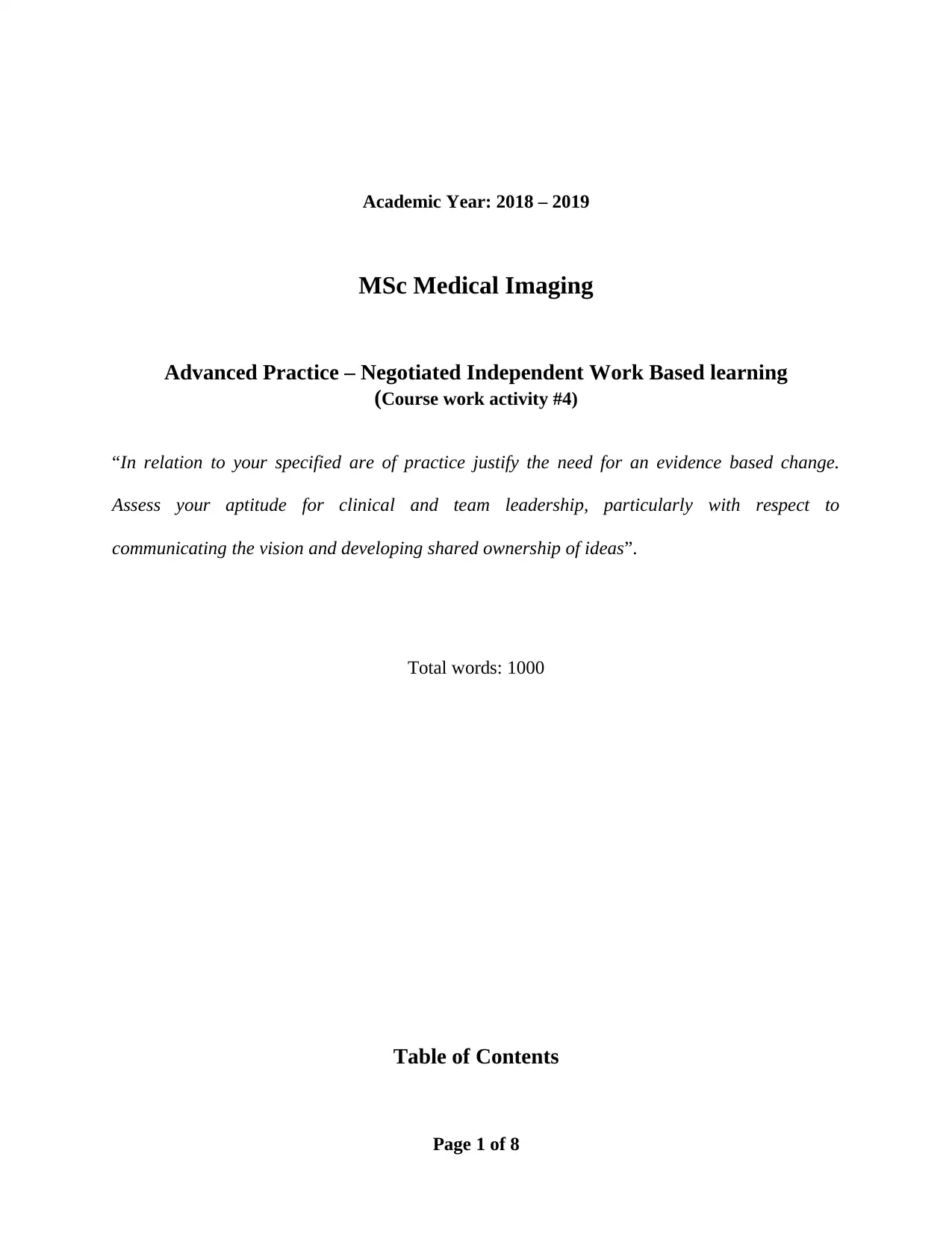
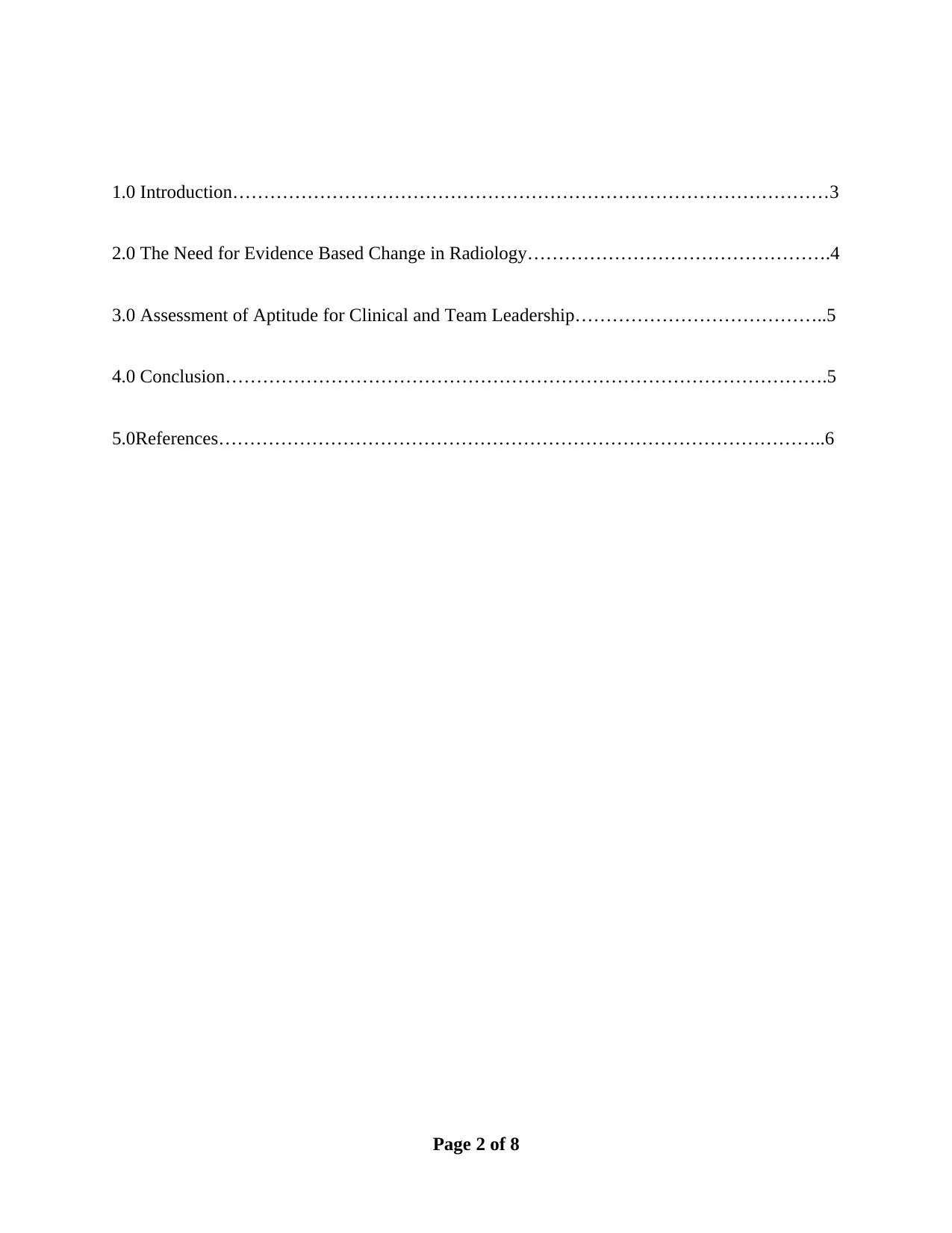
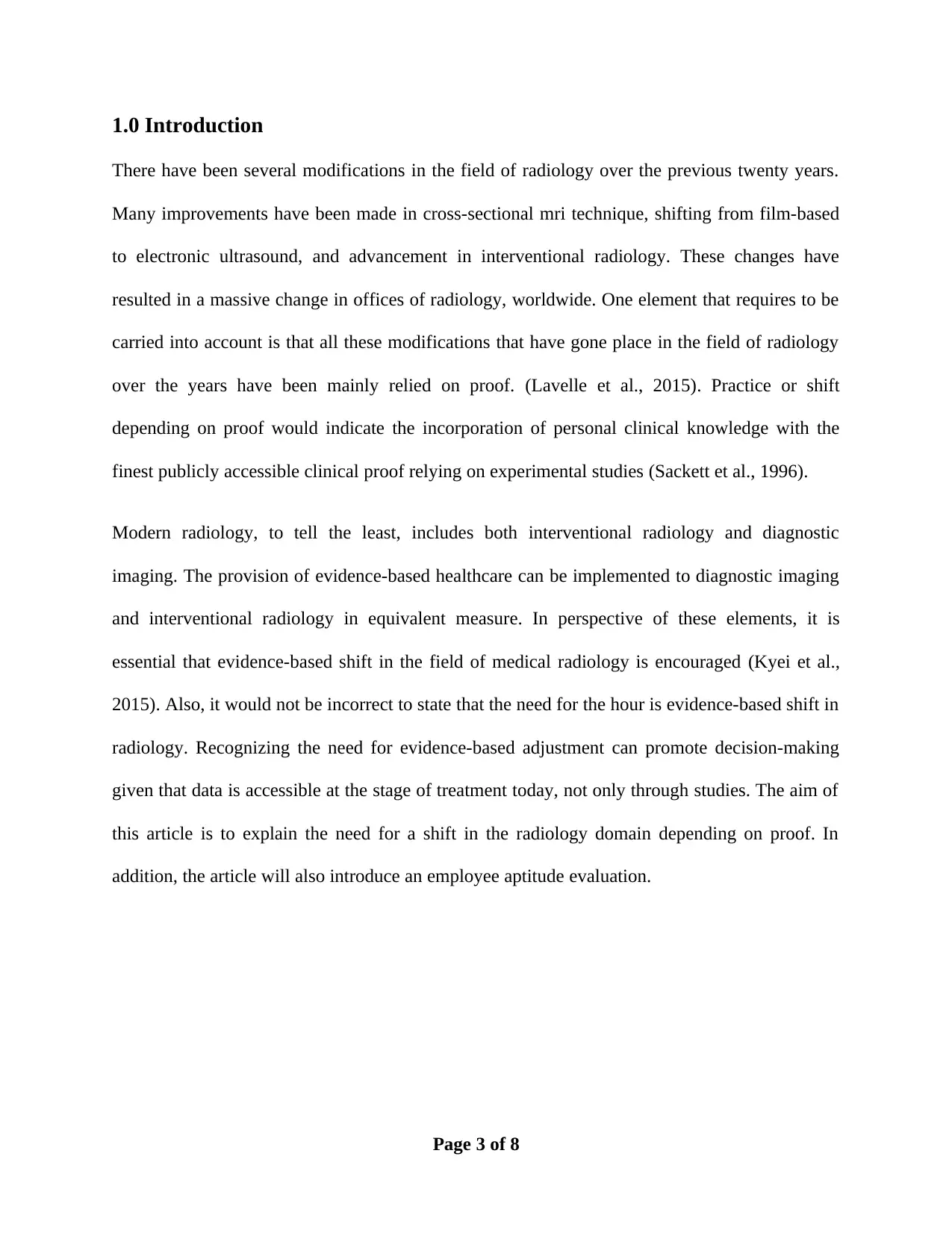
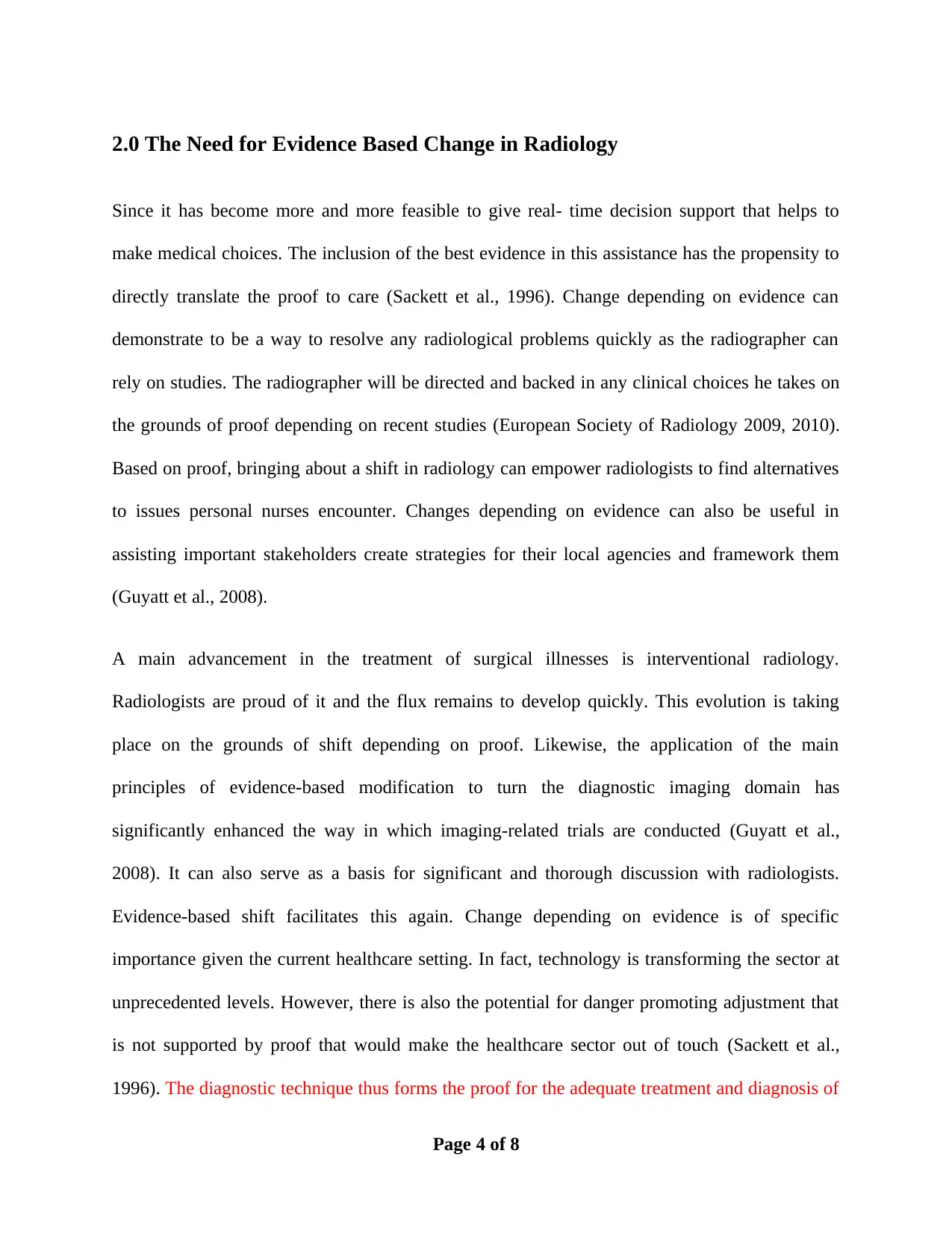
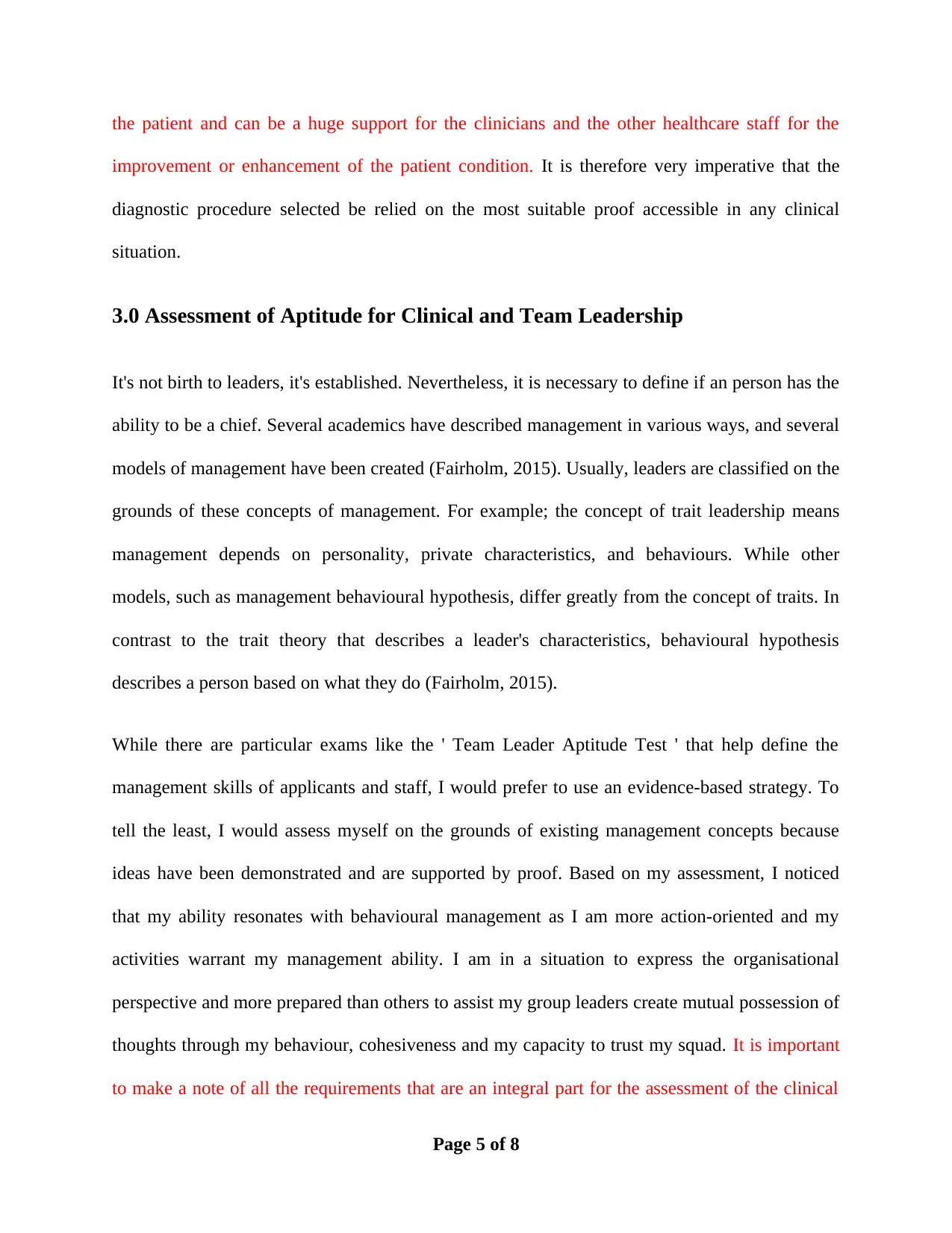
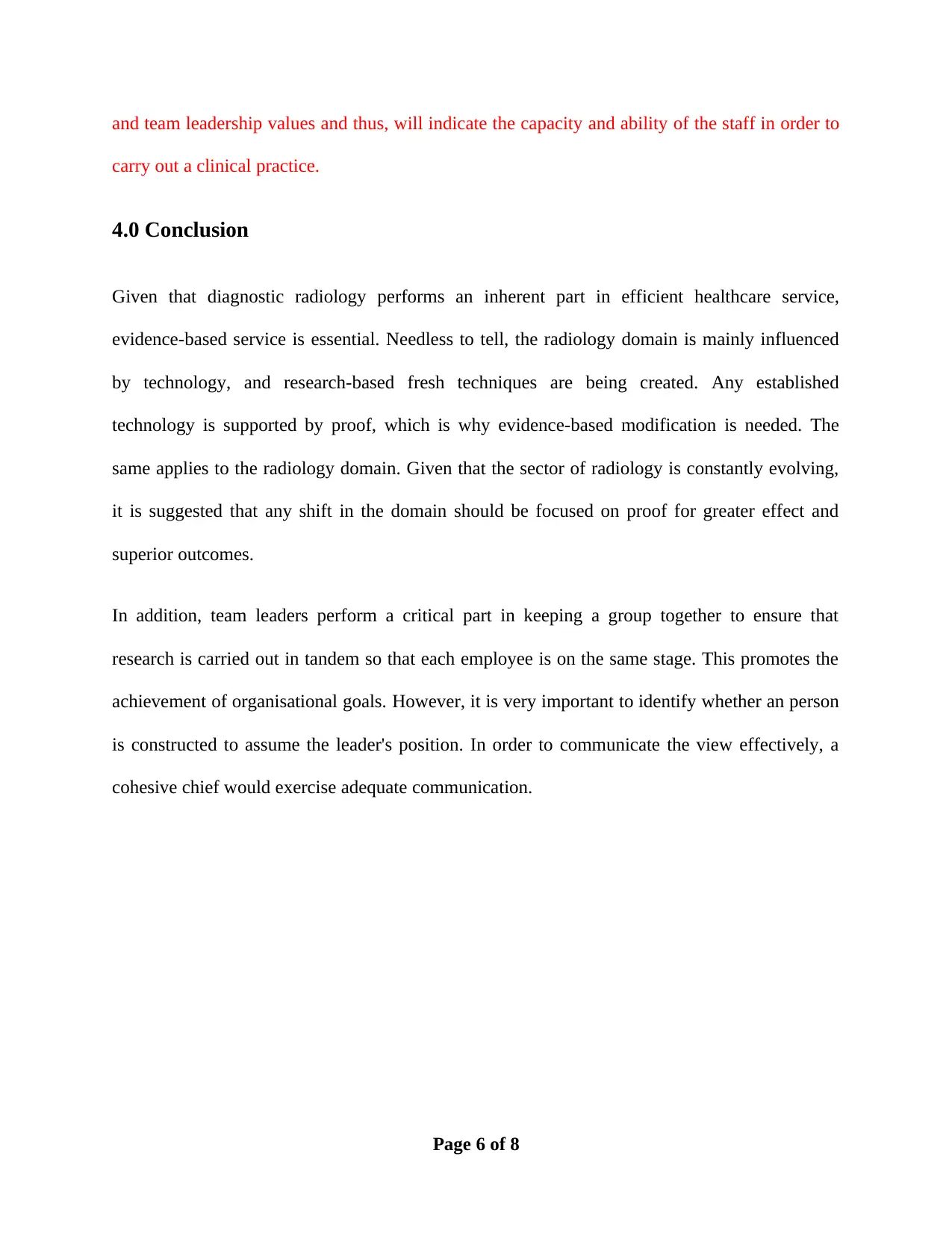
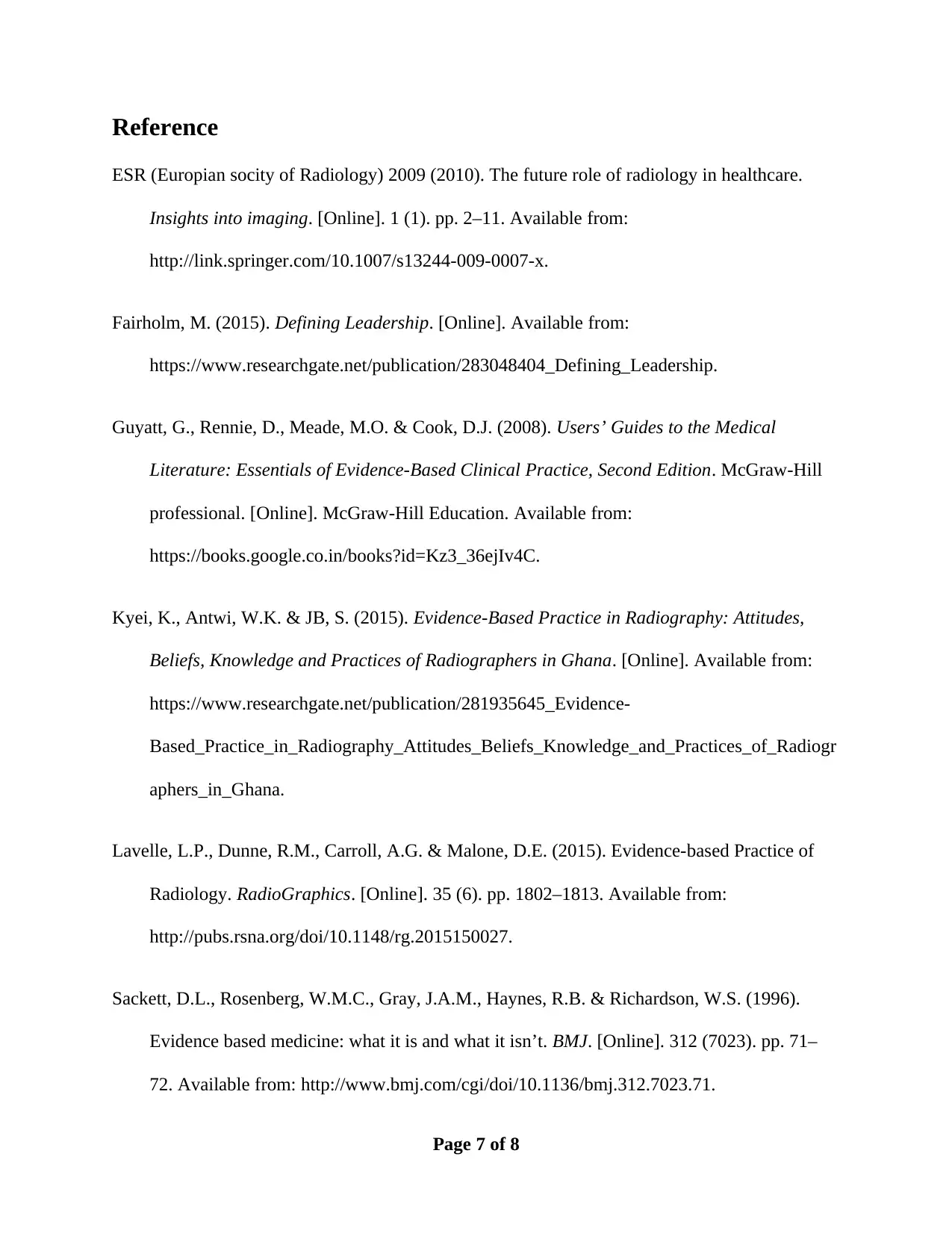





![[object Object]](/_next/static/media/star-bottom.7253800d.svg)